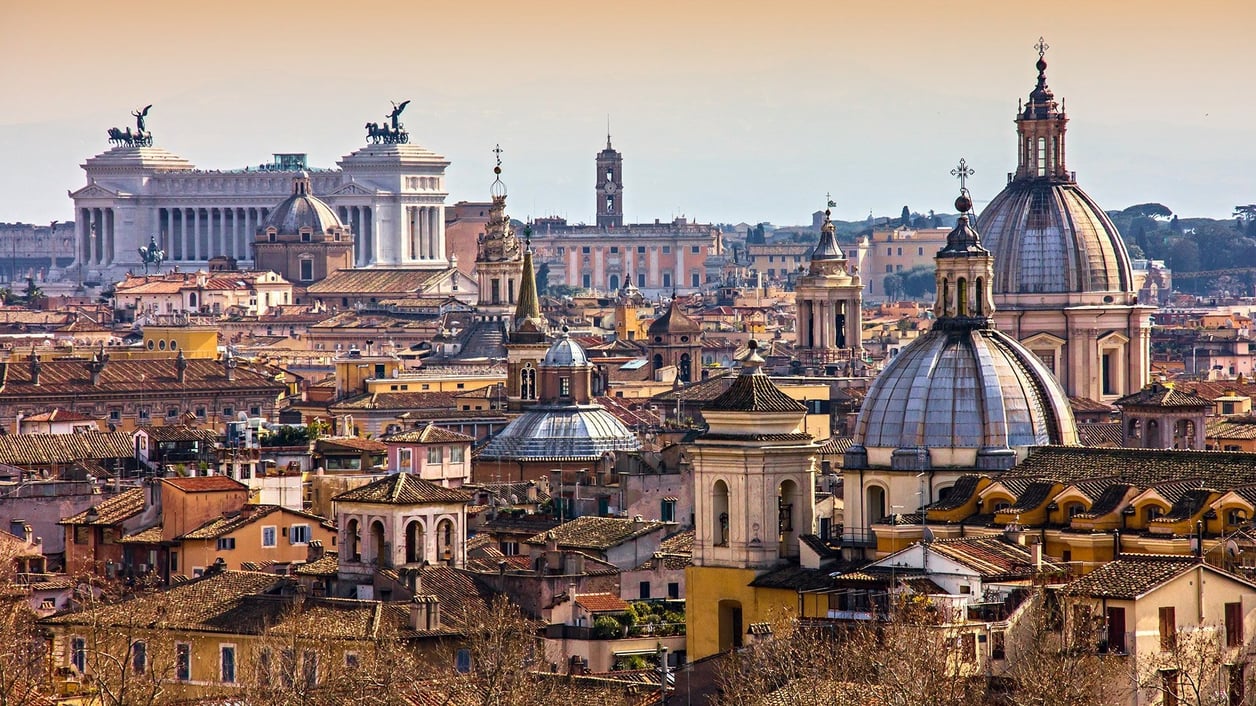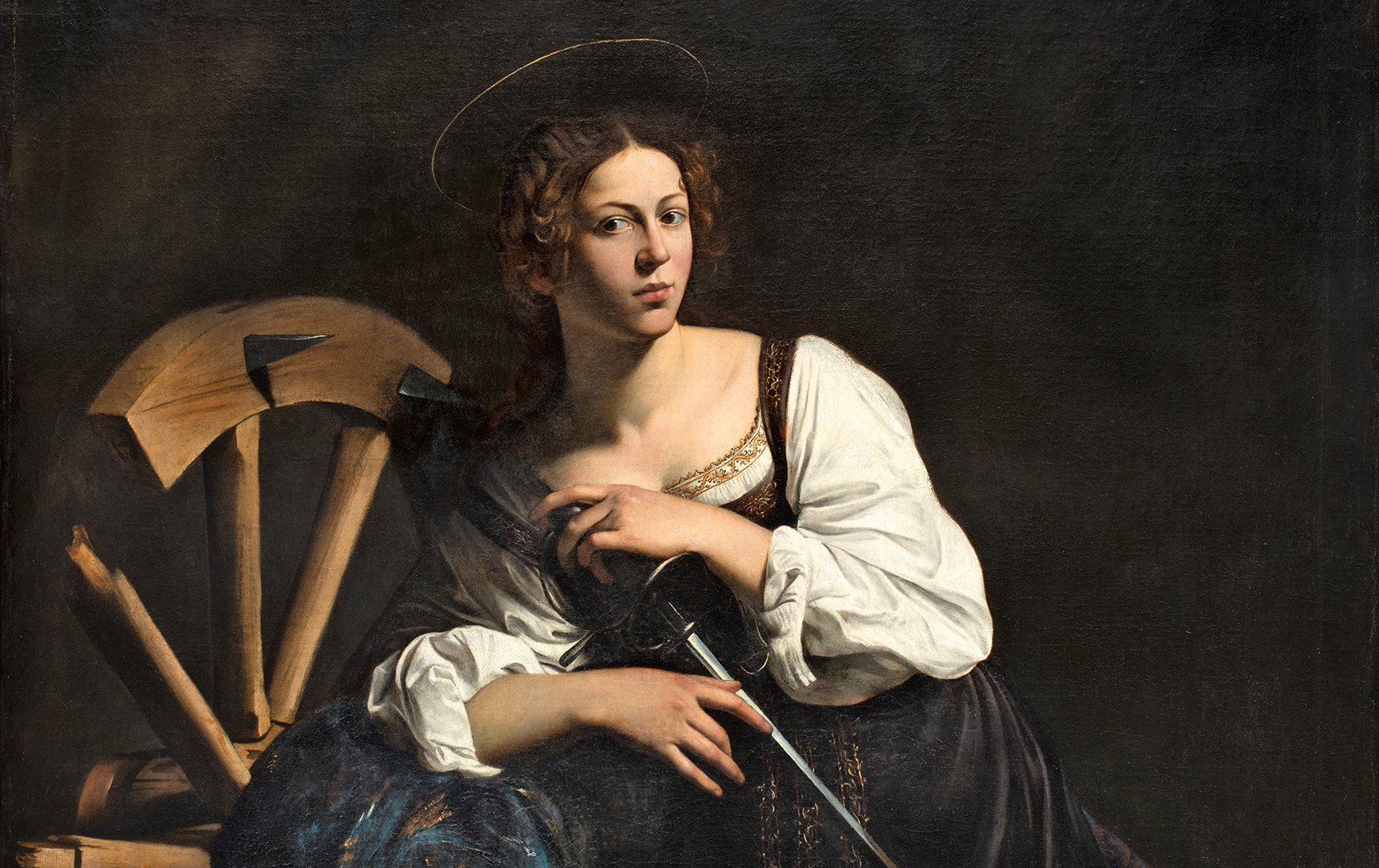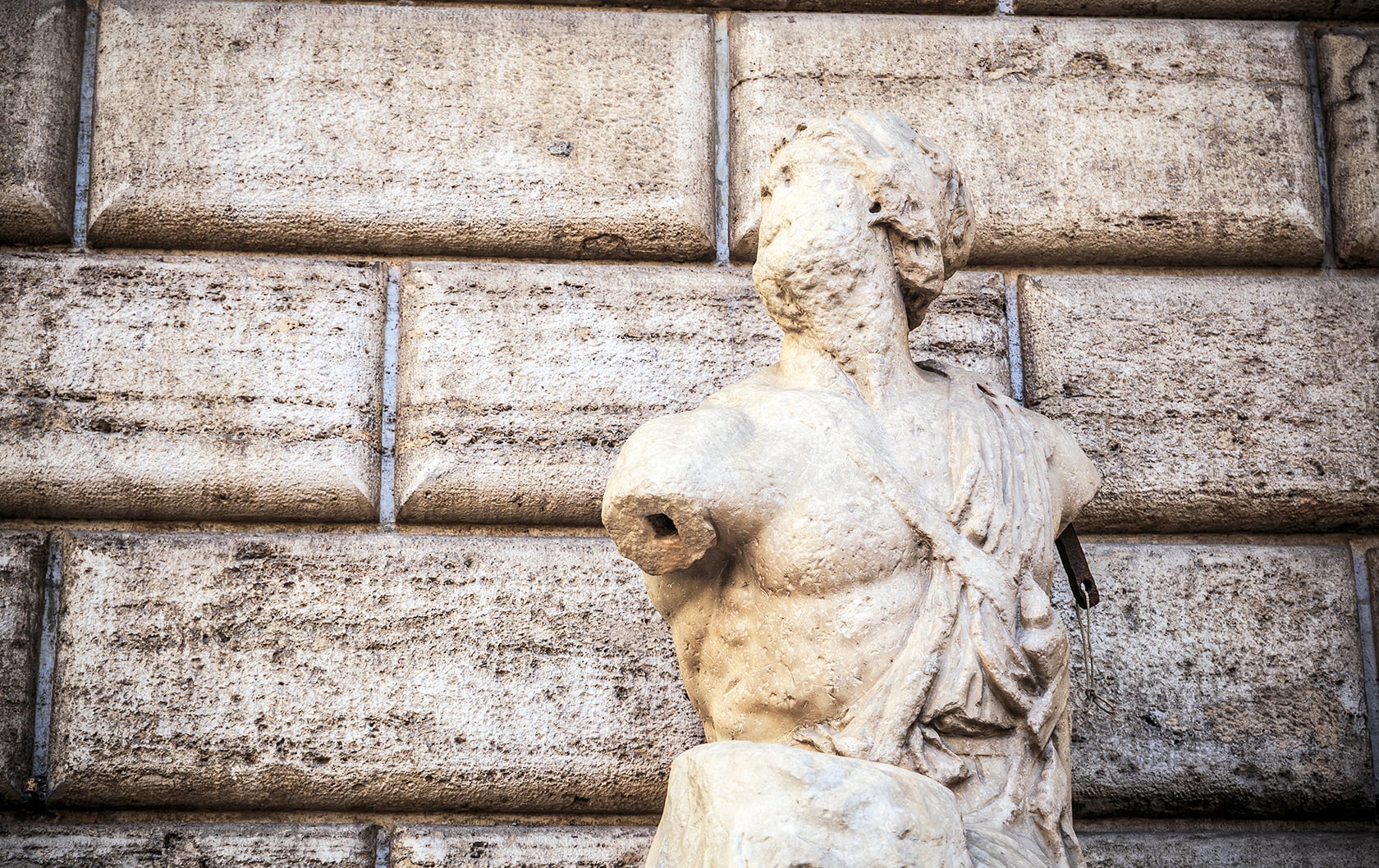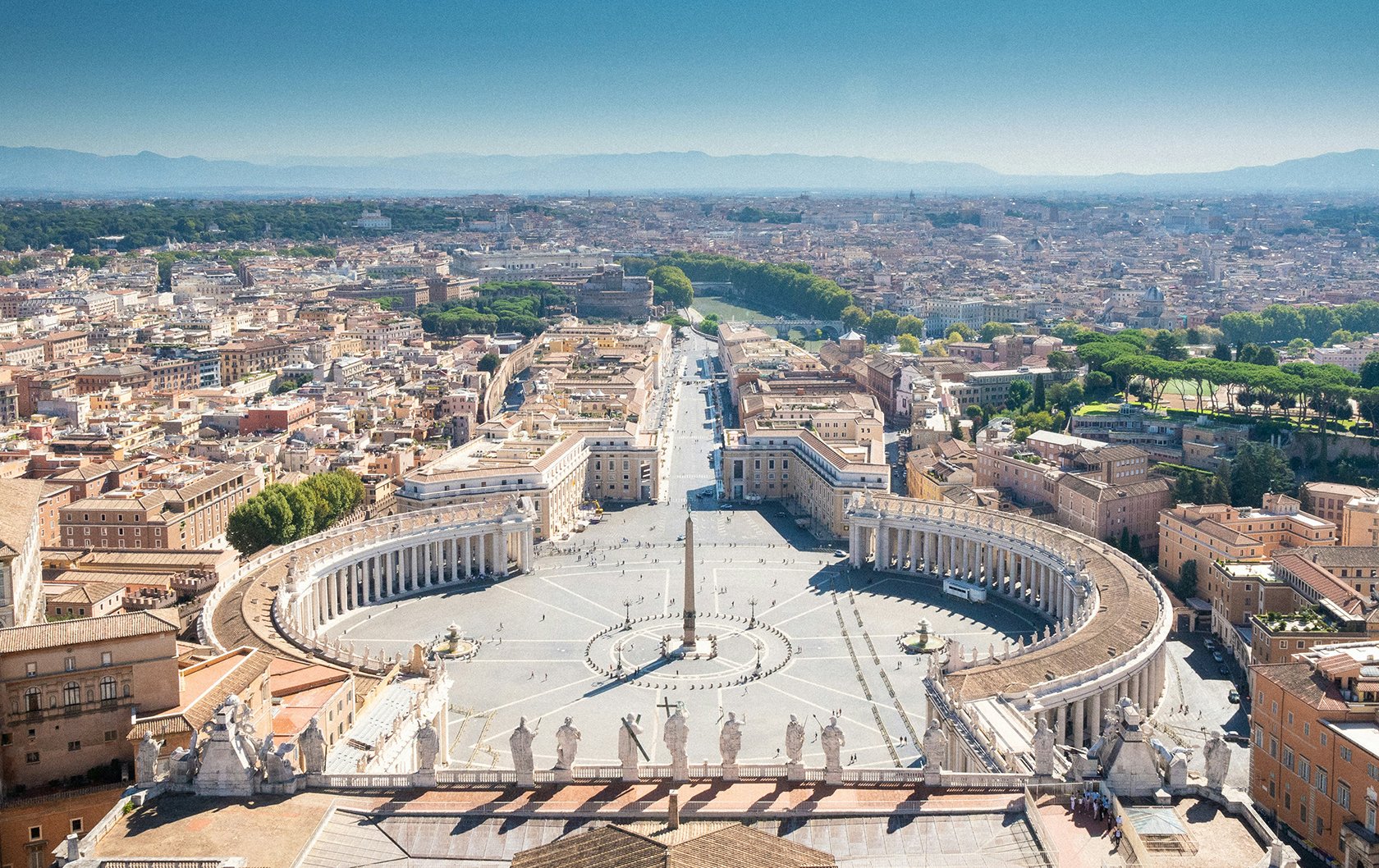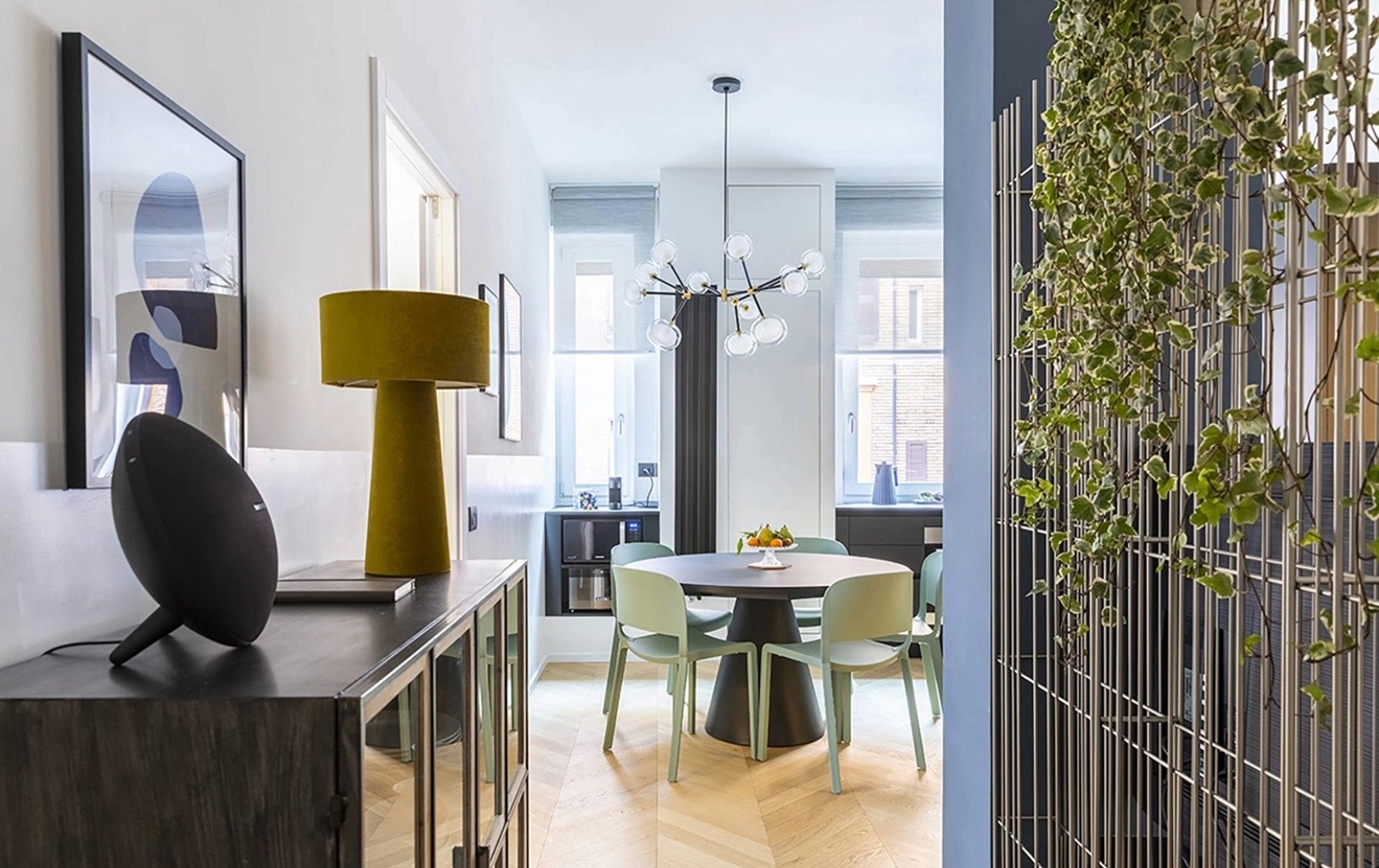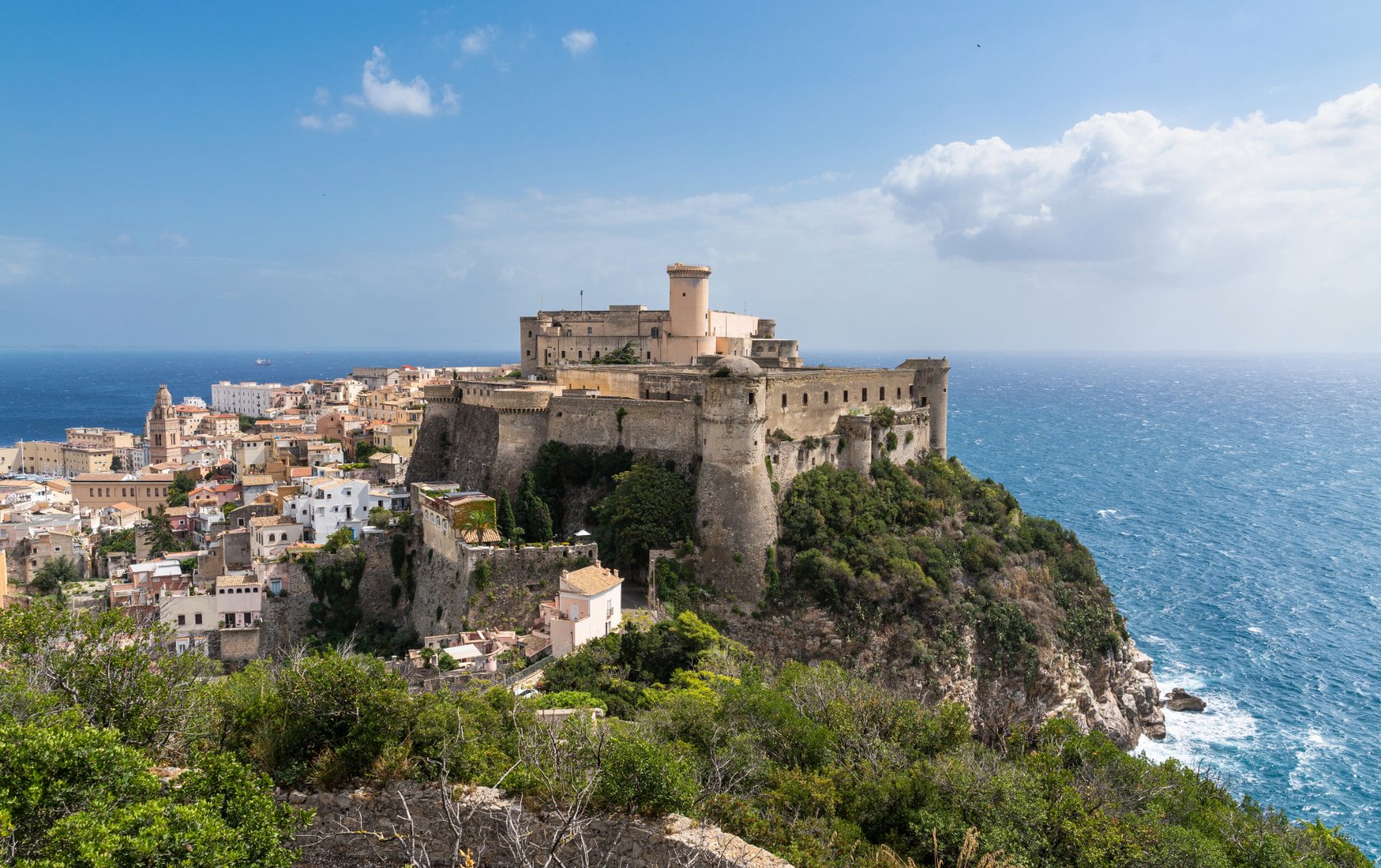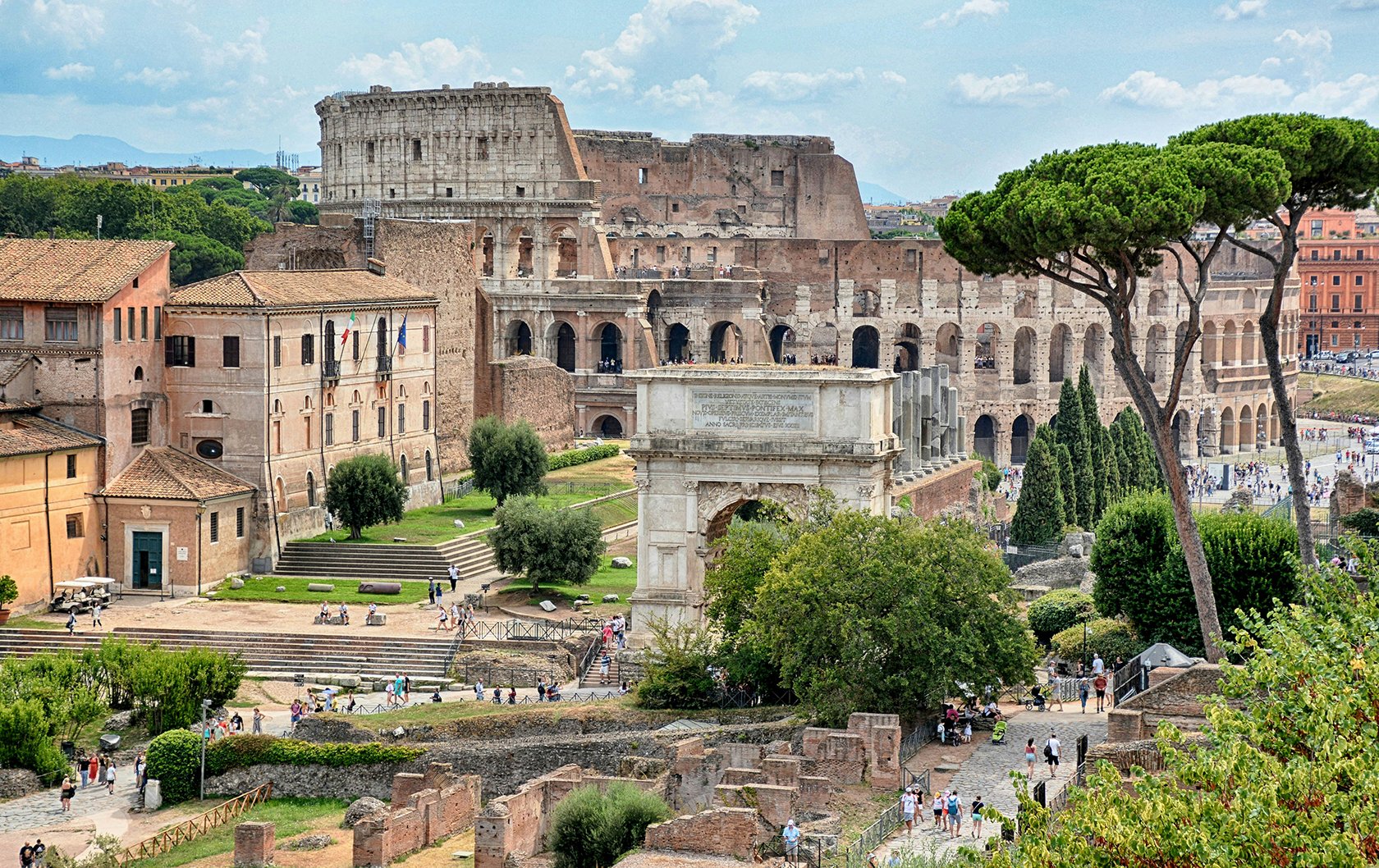The Neighborhoods of Rome
The Centro Storico is the historic center of Rome and the very heart of the city. Visitors and residents can meander the streets for years without ever leaving the city walls. Most of Rome's favorite monuments and piazzas such as Piazza Navona, Campo de' Fiori, Piazza di Spagna, Trevi Fountain, Pantheon and Colosseum, are found in this area, making it a choice district for visitors.
Prati: A pleasant area of city that is still near the sites. Prati is across the river from the Spanish Steps neighborhood, near the Vatican. The layout is reminiscent of the boulevards of Paris and you find many really interesting and sometimes amusing architecture from the Art Nouveau period. Some of the best shopping in Rome is in this neighborhood: from small designer boutiques, good gourmet food shops and open air bargain stands, to a nice department store and a huge farmer’s market for fresh foods. It is all arrayed along and behind the Via Cola di Rienzo’s broad sidewalks and cafes. Italy Perfect’s offerings in Prati are conveniently located near the river so the stroll to the Spanish Steps or Piazza Navona is in the 15 minute range along fascinating streets.
Piazza della Republica: A lovely and very busy square which lies just near Stazione Termini, the main train station. It is basically a traffic roundabout but with a beautiful fountain in the middle; The Fountain of the Naiads (four nude water nymphs). The fountain is lit at night, making this a lovely site to visit during the evening. There are shops in the arcade on the perimeter of the piazza, even a McDonalds.
Jewish Quarter: Just west of Campo di Fiore, lies one of the most intriguing districts in Rome, the Old Jewish Ghetto. In 1556 Pope Paul IV ordered the Jews of Rome to move to this walled area. The walls were torn down in 1849 Now you can find many Kosher restaurants. One of the famous dishes which originated here is the fried artichoke, which can also be found in most restaurants throughout Rome. The imposing synagogue, built at the end of the 19th century, is still the center of the area and large apartment blocks of the same era were built around it. Considerable restoration has been done in the area over the last decade and most of it is now a quiet pedestrian precinct. There are many restaurants, good kosher food shops, and excellent bakeries.
Trastevere centers on the ancient churches of Santa Cecilia and Santa Maria. It remains one of the most colorful quarters in the city. It is known as a a village within a city. It is an old, lively, and beautiful suburb of Rome. Across the river from Campo di Fiore, it is one of Rome’s most charming, authentic little villages. Once a medieval working class neighborhood, it has been gentrified and has attracted visitors from all over the world. Narrow cobbled streets, ivy covered buildings and plenty of bars and restaurants are abundant here. It is one of the most vital zones in the capital, and well known for its nightlife!
Trevi Fountain: Perhaps Italy’s most famous and photographed fountain made famous by the film “La Dolce Vita” when Anita Ekberg bathed in its waters. Legend has it that by throwing a coin over your shoulders, you are assured a return trip to the Eternal City! The Trevi Fountain is one of the busiest attractions in all of Rome. Go early to be assured a good spot for viewing. There is a good selection of restaurants in the area as well as great gelato.
Vatican/St. Peter’s Basilica: Across the Tiber River is Vatican City. It is a small city-state with far reaching global importance. The Vatican Museums, St. Peter’s Basilica and the Vatican Gardens take up much of the area. The Popes have lived here for 6 centuries. The neighborhood around the Vatican, called the “Borgo”, contains some good hotels but is removed from the more happening scene of ancient and Renaissance Rome.
Via Veneto: Made famous by Fellini’s “La Dolce Vita” which was filmed here, it is one of the most famous Boulevards in the world. It was here that the rich and famous would parade for the paparazzi. While not considered the hottest spot any more, it is still filled with luxury hotels, elegant cafes and restaurants. Tourists flock here as do celebrities and wanna-be’s so it is a great place for strolling, people watching, and some high end shopping.
Piazza Barberini: At the end of the Via Veneto Boulevard is Piazza Barberini, conveniently located between the Spanish Steps and the Trevi Fountain. This square is famous for the Triton Fountain (Fontana del Tritone), a baroque fountain featuring four dolphins holding an open scallop shell in which Triton sits blowing into a conch. This is an area where you will find affordable cafes and restaurants.
Villa Borghese: A famous villa constructed at the beginning of the 17th century for Cardinal Scipione Caffarelli Borghese, a nephew of Pope Paul V. Surrounded by one of the largest and most beautiful public parks in Rome, it is a location for a quiet peaceful afternoon strolling the grounds, biking, jogging or visiting the famous Borghese Gallery which is located inside the park. The gallery is home to many famous Bernini sculptures and other lovely artistic masterpieces. Advance reservations are required to visit the gallery.
Testaccio: Once home to the slaughterhouses of Rome and its former port on the Tiber river, Testaccio means "ugly head". This area is known for its authentic Roman restaurants serving traditional fare to the locals. This neighborhood is where modern-Romans go for a good night out. Authentic Rome all the way!
Aventine Hill (Aventino) is a very rich quiet suburb and possibly an option if you want your Rome accommodation beyond the frenetic pace of Rome. Walk up Aventine Hill and find the secret keyhole with the most incredible view of the dome of, St. Peter’s. It is an easy walk and there is a nice park (Park of the Oranges - Parc d’orange) with spectacular views.
Campo de’ Fiori is a lively square in central Rome that starts each morning as an open-air market place, at lunch it is filled with affordable outdoor cafes, and in the evening it is a hot spot for socializing among Rome’s younger crowd. A great spot for people watching, the atmosphere here is lively and exciting! It is a place to see and be seen! Campo de’ Fiori is the hub of the area, presided over by the statue of the brooding Giordano Bruno who was burnt at the stake in 1600 for heresy.
Coliseum: Located in “Centro Storico” (historic district) the Ancient Roman Coliseum is one of the New 7 Wonders of the World. Romans refer to it as “Il Colosseo”. The Coliseum, also called the Flavian Ampitheater, is one of the great works of Roman engineering. In the 1st century AD, when it was built, it was the site of gladiator fights, mock sea battles and other entertainment. It had three stories of tiered seats and could hold 50,000 spectators. Underneath the floor were two levels of tunnels and cages, which were used to hold the gladiators, actors and wild animals before the spectacles began.
Roman Forum and Palatine Hill: The commercial, political and religious center of ancient Rome . It contains all of the ruins from the most important public buildings and temples. The ruins are quite well preserved; columns still standing and the buildings are still intact. It provides a fantastic walk through Ancient Roman History. The Palatine was the home of many of the most famous figures of ancient Rome, including the emperors starting with Augustus. Palatine hill is perhaps the most impressive of the 7 hills of Rome, standing 40 meters above the Forum and Circus Maximus providing a lovely birds eye view of these sites. Our word “palace” came from the homes of the Palatine.
Piazza del Popolo is one of Rome’s largest and grandest squares. Here you will find the iconic obelisk brought by Heliopolis during the reign of Augustus. At the end of the square is the Porta del Popolo, the gateway in the 3rd century Aurelian wall; the major gateway into the old city. The famous “twin” churches, Santa Maria del Miracoli and Santa Maria di Montesanto flank the street. The square’s most important church is Santa Maria del Popolo, one of the best examples of a Renaissance church in Rome. This is a pedestrian-friendly area with many roads closed to traffic. Nearby are the beautiful and relaxing Borghese gardens. Three roads fork out from here towards the Spanish Steps and Piazza Navona, where the big designer brands (Gucci, Fendi, etc) stores. Fun for people watching with some very talented street artists here. A beautiful place, to relax and refresh, take a break!
Piazza Navona: The most outstanding square of Rome’s Baroque period, it features Bernini’s Fountain of Rivers as it’s centerpiece,just one of three fountains that can be found there! The square is actually an oval, as it was once used for chariot races in ancient Roman times. A magnet for tourists, street vendors and performers, it is crowded day and night. The entire piazza is lined with bars and restaurants. The atmosphere here is exciting! Just sit down and watch the show! A real hive of activity!
Pantheon: Originally built as a temple to all of the pagan Gods, the Pantheon is the oldest building in Rome under continuous occupancy since ancient times. It was converted to a Christian Church by the Emperor Constantine and remains an active church today. Raphael’s tomb is here. The massive dome at the top, until recently the largest in the world, served as a model for Michelangelo’s Dome for Saint Peters Basilica and for Brunelleshi’s famed Duomo in Florence. In the center of the dome at the top is an occulus (hole) that lets the light (and rain) shine down; a very ethereal scene; magical! The Pantheon area is central to most Rome tourist attractions.
Piazza di Spagna (Spanish Steps): Located in the heart of Rome, this vibrant and elegant square is surrounded by 18th-century buildings augmented by the colorful flowers that adorn the steps in the springtime. The elegant steps by Francesco de Sanctis (1723-1726) consists of twelve flights of varying width that ascend to the scenic Franciscan Church of Trinita dei Monti. At the bottom of the steps, is the Piazza di Spagna and here is the La Fontana della Barcaccia fountain designed by Bernini. More of a daytime destination, this area is known more for it’s shopping, and less for it’s nightlife. Home to some of Rome’s most upscale shopping streets including Via Condotti. The elegant Hassler Hotel, one of Rome’s grandest, lies at the top of the steps. This is by far, Rome’s most upscale neighborhoods with high end restaurants and designer boutiques.
Porta Portese: Massive flea market on Via Portuense in Trastevere every Sunday morning from 7am to 2pm. The usual flea market fare can be found here including antiques, coins, books, furnitureand plenty of used items. Much of the new merchandise is from the orient. The flea market occupies both sides of the street for many blocks (well over a mile long) parallel to the Tiber river. Considered the biggest flea market in Italy. Most of the vendors here are willing to bargain, buyer beware!
Monti: Rome’s “cool” quarter! A stone's throw from Rome's Coliseum, is the up-and-coming neighborhood of Monti, buzzing with cool bars, trendy fashionable shops and traditional restaurants, loved by a loyal local crowd! A working class neighborhood in the heart of the historic center tucked between busy Via Cavour and Via Nazionale, east of the Forum. The endearing little Piazza della Madonna dei Monti is the center of this neighborhood. It has a genuine village atmosphere near to everything but at the same time a world of its own. As its name suggests (Monti or “Mountain”), it is on a hill and the winding roads are steep and narrow. There are plenty of excellent restaurants, good local grocers and artisan workshops. Its dominant landmark is the basilica of S. Maria Maggiore, one of Rome’s four great Papal basilicas.
San Giovanni is named after two joined buildings; the San Giovanni Basilica and the Palazzo Laterano (Lateran Palace - which was the residence of the Popes in the middle ages). Most tourists who visit the area do so for San Giovanni, Santa Croce in Gerusalemme and the Nero and Claudian aqueduct, which also forms part of the city wall. The main attraction of S. Giovanni is the basilica from which the district takes its name. In the square in front of it there are often trades union rallies and live concerts; it is the center of the zone's activity. It is also famous for the clothing market on Via Sannio where you can find good bargains if you have the patience. The district is busy, and the numerous roads that intersect here are full of traffic especially in the rush hours. However it is well connected with the rest of the city and S. Giovanni has good restaurants and nightlife.
San Lorenzo: Today San Lorenzo, due to the vicinity of the La Sapienza University (largest student enrollment in Europe, one of the oldest universities in the world), is increasingly assuming the character of a student and young artist district. Every evening, hundreds of young people descend on the area, much to the chagrin of the inhabitants of the area. Pizzerias, boutiques and other modern places are replacing the old popular workshops and small markets. Many young people have moved here, not only for its proximity to the university, but also for the vast choice of nightlife. Recently a large part of SanLorenzo has been turned into a pedestrian precinct. There are plenty of bars and restaurants in this neighborhood.
Esquilino Termini Station: The area around the main train station, has mostly tourist hotels and street food. Near to Rome's main railway station, the Esquilino is fast becoming Rome's Chinatown. However it is also still home to Romans who moved there in the mid-1920s when it was a good place to live for railway workers and government employees. It can be noisy but it has the great advantage of being close to the historic center, the station and the underground. Some parts of it are being restored and the relocation of the open market from Piazza Vittorio Emanuele has given the whole zone a much needed facelift.
EUR Garbatella. This formerly agricultural town was built up as the site of the 1942 World’s Fair by Benito Mussolini although that event was cancelled due to WWII. It features much stately architecture of fascist style, with the most representative the “square coliseum”. It is now a pleasant business and residential district.
Monte Mario: In the northwestern section of Rome on the highest hill, it is a great place for a drink to take in the panorama of Rome. It lies north of Prati, away from the hustle and bustle of Central Rome. The eastern part of the hill is a nature preserve and on the west lies the now upscale district of the same name. Although it is the highest hill in the modern city of Rome, it is not one of the proverbial seven hills of Rome, as it is outside the ancient city.
Parioli: Rome's most elegant residential section it is surrounded by the gardens of Villa Borghese to the south, and the Villa Gloria and Villa Ada to the north. Some of the city's finest restaurants, hotels, and nightclubs are here. It lies adjacent to Prati but across the Tiber to the east. It is a safe area, and attracts those who are looking for less touristy areas. Built in the 1930s, Parioli has always been considered the zone of the affluent, socialite Romans.
Aurelio (Via Aurelia): IN 270 AD the Emperor Aurelian initiated a project to build a formidable wall around the entire city of Rome. There are several locations around the city where you can see sections of the remaining wall. The original walls were 19 miles long with 381 square towers, 18 main gates. You cannot travel in Rome without crossing somewhere near the Aurelian Walls. The walls enclosed all the of the seven hills of Rome plus the and Campus Martius, on the right bank of the Tiber, and the Trastevere district. The Via Aurelia pierces the wall and sections of the ancient Roman road can be seen and walked along. It is lined with ancient Roman tombs and this is also where you find many of the Christian catacombs because it was Roman law that burials could not take place within the city walls.
Cassia: Old Roman consular road to the north-west, the traffic-blocked Via Cassia. It is crowded with shops and supermarkets and residential compounds set back from the narrow road. It is often a popular area for foreigners with children because many of the international schools are along the Via Cassia.
